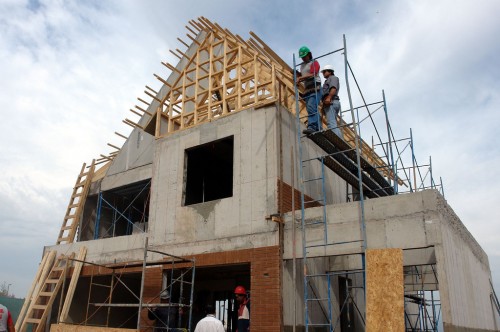
When it comes to paying for home improvements, there are many ways to tackle these sometimes-costly projects. Sometimes you don’t have time to plan ahead, as issues simply occur. Other projects are ones you can plan and save for. No matter what the project, or how suddenly it comes up, you can probably find a way to pay for it.
Here are the five most common ways to pay for home improvements, whether they are sudden or planned.
Savings
The ideal situation is that you have money in savings set aside for emergencies. Emergency savings is a good idea anyway, in case of other types of catastrophe including a sudden loss of income that can occur for a variety of reasons.
This saving is also for instance such as emergency home improvements. However, before you dip into the emergency savings account, make sure you have defined the word emergency pretty clearly.
Water Issues: Issues with water leaks, water service, or a hot water heater can be classed as emergencies, especially as if left untreated, these will cause more issues down the road.
Roof Issues: Roof leaks, gutter and drainage issues, and more are often emergencies.
Structural Problems: Sinking foundations, damaged walls, and other structural damage whether human caused, natural disaster related, or aging are generally emergencies.
Electrical Issues: Electrical issues are essential to fix since they can lead to fires, so they are considered emergencies.
If you must dip into an emergency savings fund to take care of one of these conditions, that is an acceptable reason. However, many studies show that homeowners and other Americans do not have significant emergency savings. Also, it is not a good idea to dip into savings for issues that are non-emergent. In those cases, the homeowner must find other ways to pay for home improvements.
Use Credit Cards
In some instances, you can use credit cards to assist with home improvements, provided you do so wisely. Some branded home improvement store cards offer rewards and points to members who use them, and even offer periods of interest free financing on new purchases.
As long as you pay things off in a timely manner, these can be a good option, but you need to be cautious. Sometimes after the interest free period, the rates on the cards skyrocket and not paying them can have a significant impact on your credit.
For non-emergency repairs, and some items like furniture and appliance purchases, credit cards can work well, and help boost your credit score if you use them wisely.
Use A Home Equity Loan
If you have equity in your home, it may be worth exploring an equity loan to do home improvements. This is another area to use caution: only improvements that are emergencies, urgent, or that increase the value of your home should be considered. The reason is simple: if the market in your area took a turn, you could end up owing more on your house than it is worth.
There are almost no circumstances where being upside down on your home is an acceptable alternative. Negative equity means if you sold your home for what it appraises for, you would still owe on it. Even if you don’t plan to sell your home anytime soon, this is an extremely negative position to be in.
Home equity is your investment in your home, but it can be useful if the situation calls for it. Major remodels that increase value significantly can justify the risk of a home equity loan, or a long-term plan to stay in your home coupled with improvements can make this a viable option.
Unsecured Financing
When it comes to financing some things, sometimes an unsecured personal loan is a better answer than home equity, depending on the amount an interest rate.
For example, when considering an unsecured home improvement loans, it’s helpful to understand what that personal loan will do for you. One of the primary things is that it allows you to borrow money without touching your home equity.
This can be a big advantage if you decide to sell your home, or you simply don’t want to compromise your investment. Personal loans do have higher interest rates, in general, but come with quick approvals and none of the closing costs or fees associated with a home equity loan.
Sometimes, these fees and closing costs add up to more than the additional interest you pay on a personal loan. An unsecured loan also can help boost your credit score significantly provided you make payments on time, and eventually pay off the loan in full. These loans can range from 3-7 year terms depending on the amount. Your income will dictate how much you can reasonably expect a bank to loan you, and be sure the payment amount fits in your budget.
Borrow from Family or Friends
While not the most pleasant prospect for many, you can borrow from family or friends if necessary. This can be awkward, and is the last choice on this list because it is typically not ideal.
However, if you have a roofing issue or major problem with your home, and borrowing from family or friends is the only option, you might need to do so. Just be sure that you protect your relationships: have a written loan agreement in place, and pay back the money in a timely manner just as you agreed upon.
Home improvements and emergency repairs can be costly, and figuring out how to pay for them can be a bit stressful. Consider your options carefully, and do what is best for your situation, whether that is borrowing from your own savings or borrowing from others in a variety of ways.
 SU
SU REDDIT
REDDIT







